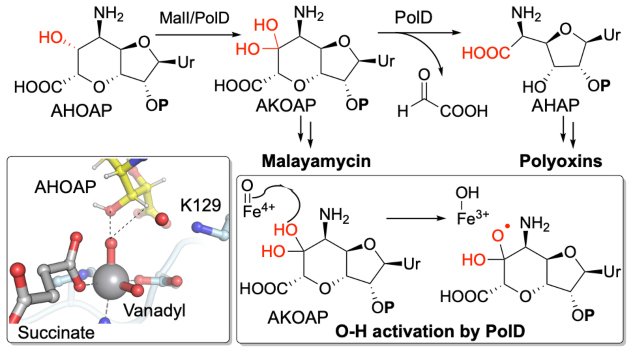
Researchers in the Yokoyama lab, in collaboration with the Boal lab at Penn State University, have uncovered a surprising chemical reaction that could help scientists discover and design new antifungal medicines.
Their study, published in the Journal of the American Chemical Society, focuses on a powerful enzyme called PolD, which plays a key role in how certain antifungal compounds are made in nature.
This enzyme helps determine whether the final product will be based on a 6-carbon or 7-carbon sugar, which is an important structural difference in antifungal drugs, said senior author Kenichi Yokoyama, PhD, associate professor of biochemistry and chemistry.
Until now, scientists didn’t understand how these different forms were produced. The team has now revealed the molecular mechanism behind this process, filling a major gap in understanding of how nature builds these compounds.
He said that what’s most exciting is how the reaction begins: with the homolytic cleavage of an oxygen-hydrogen (O-H) bond, one of the strongest chemical bonds in biology. This kind of reaction is extremely rare and difficult, and this is the first time it’s been observed in a large family of enzymes that depend on iron and a molecule called 2-oxoglutarate.

“We found that PolD catalyzes one of the most challenging chemical reactions in nature by cleaving an O-H bond, demonstrating an unusually powerful catalytic function of this enzyme,” Yokoyama said. “Aliphatic O-H bonds have very high bond dissociation energy, and this report represents the very first example of radical initiation by O-H activation in the huge superfamily of Fe/2-OG enzymes.”
By understanding how PolD works, scientists can now better predict the structures of antifungal compounds encoded in bacterial genomic DNA — potentially leading to the discovery of entirely new treatments.
Beyond antifungals, the ability of PolD to perform such a difficult reaction could have broad implications for drug synthesis and biochemical engineering.
Next steps for the team include using genomic data to discover new antifungal compounds and investigating the atomic-level details of how PolD breaks the O-H bond.